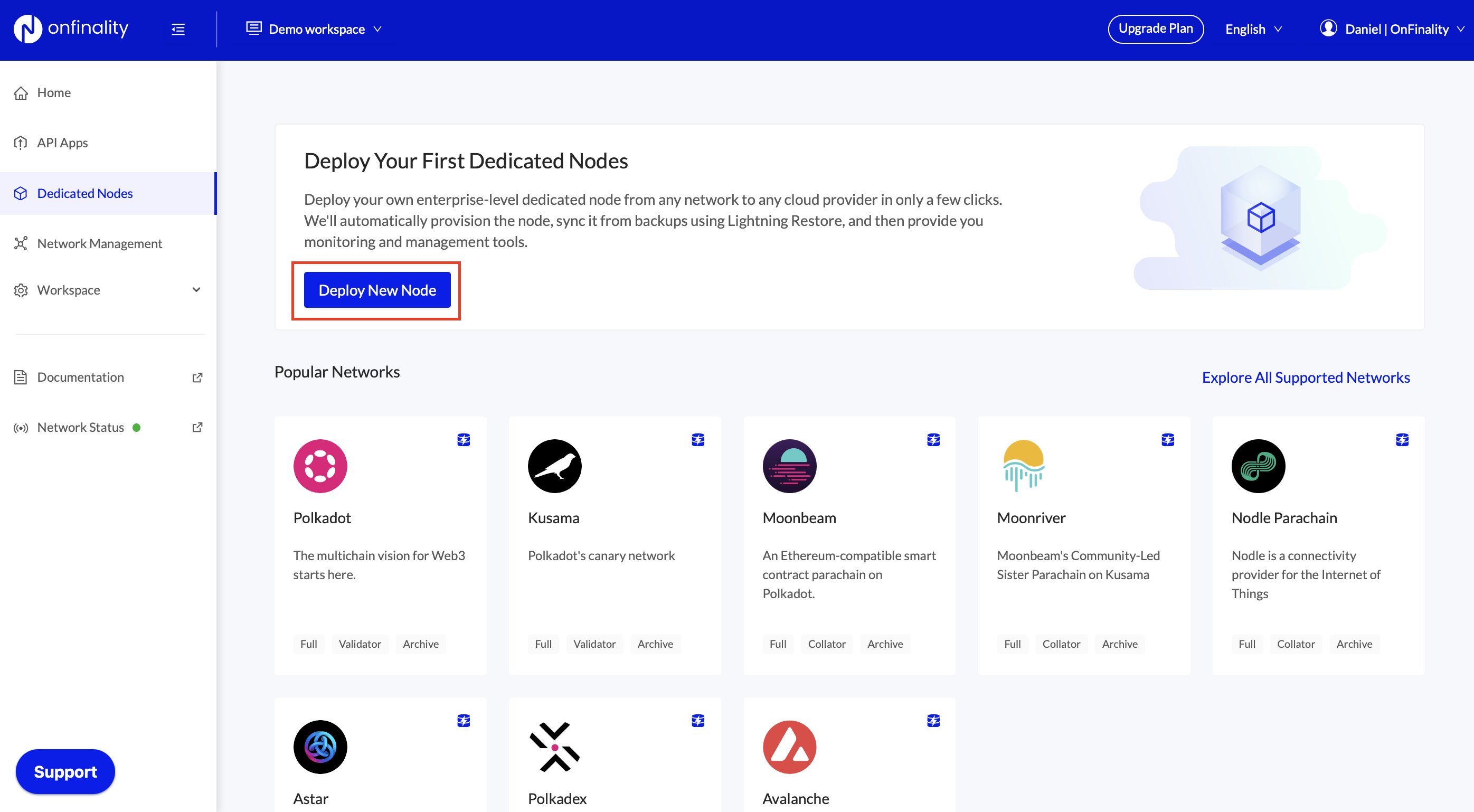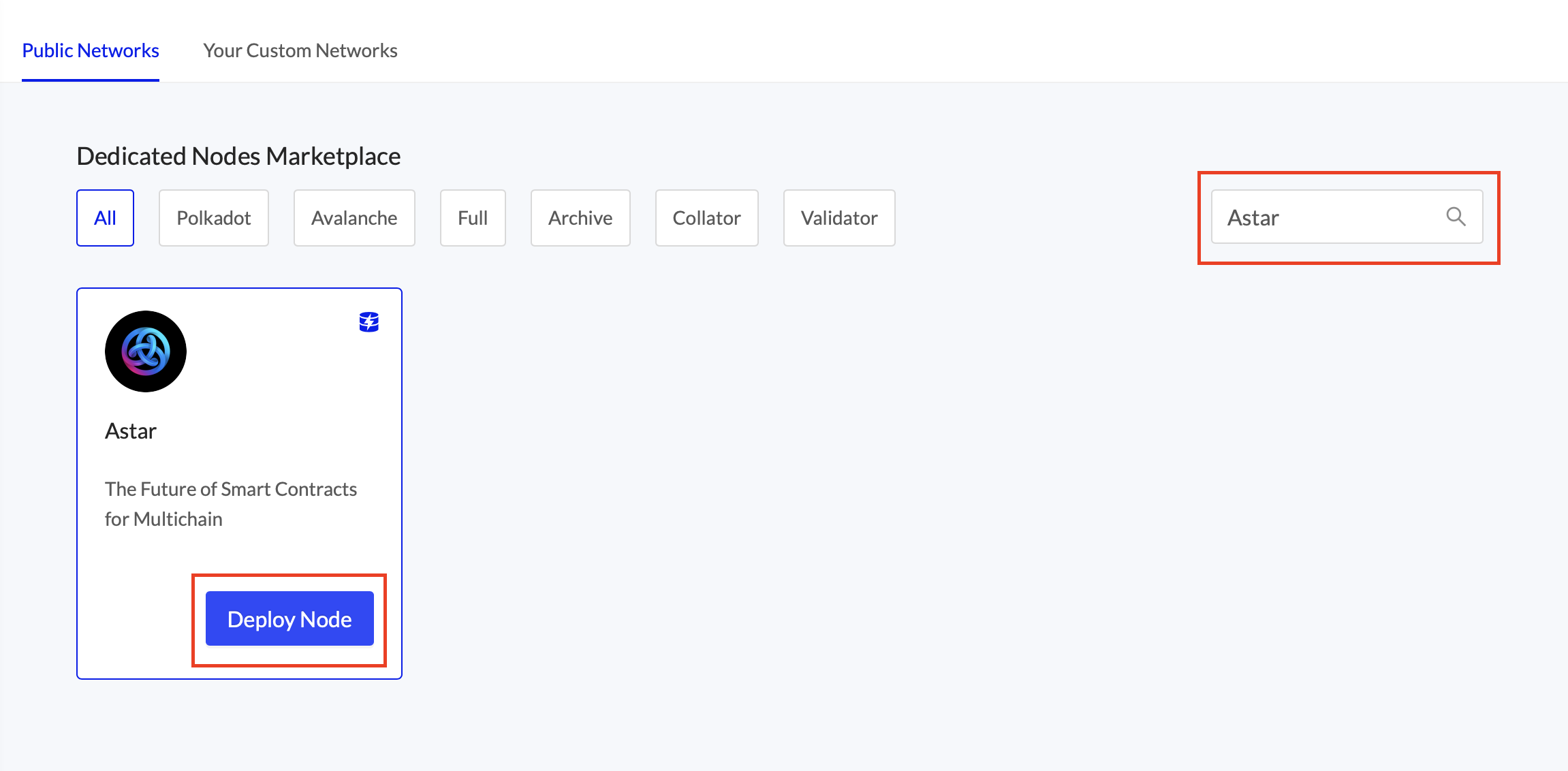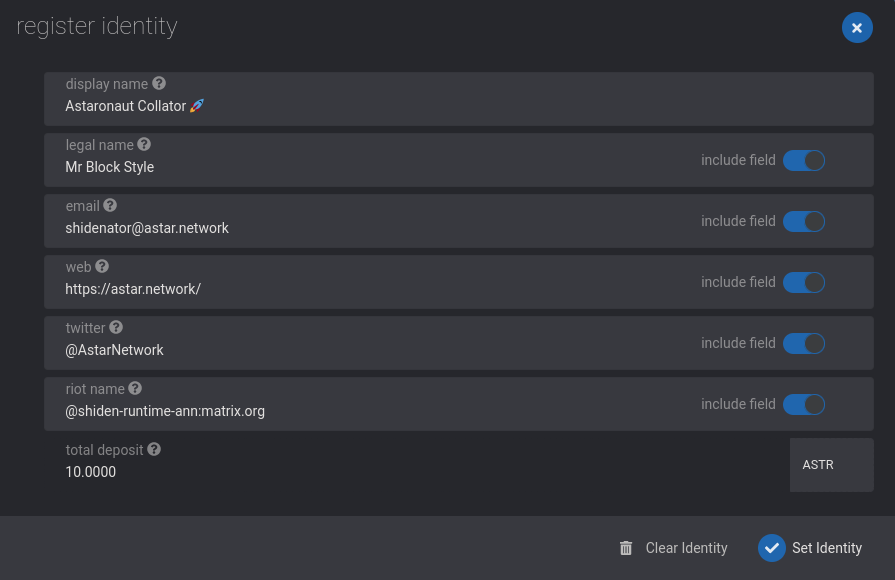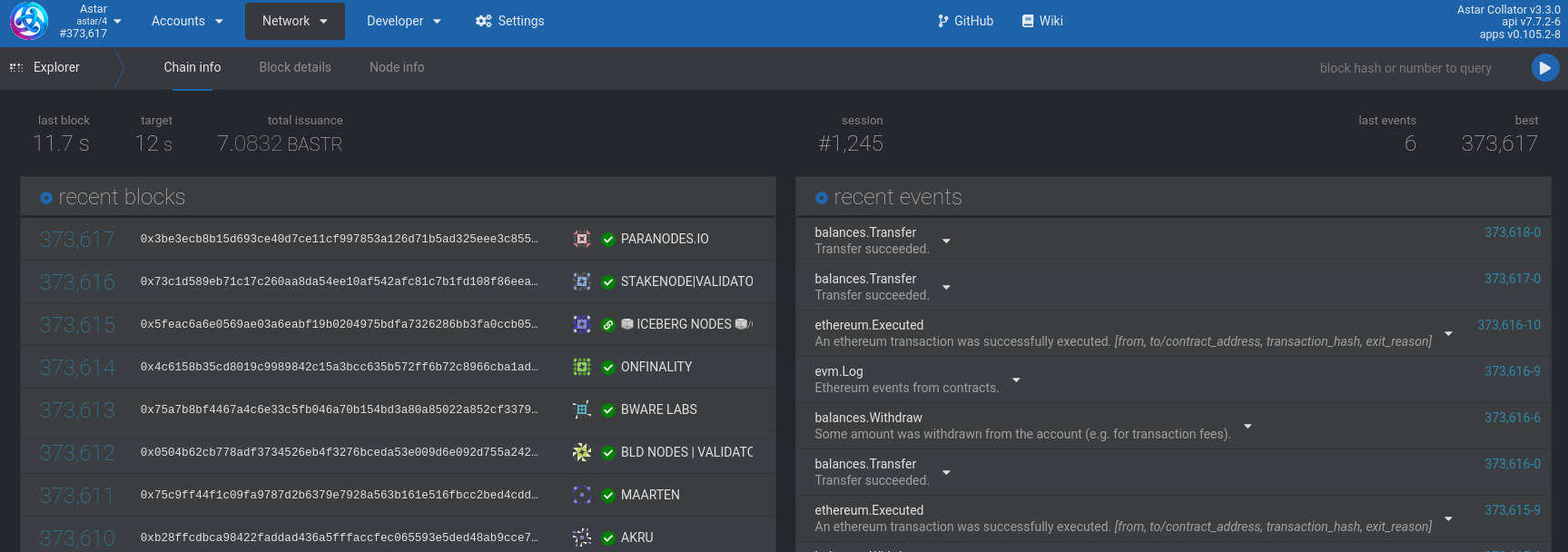Set up an Astar Collator on OnFinality
How To Set Up A Collator For Astar On OnFinality
Introduction
In this How-To Guide, you will learn how to set up your own Collator for Astar. This guide should be used alongside Astar's official guide which is kept up to date and includes more detail.
Astar
Astar Network provides the infrastructure for building dApps with EVM and WASM smart contracts offering developers true interoperability with cross-consensus messaging (XCM) and a cross-virtual machine (XVM). Astar’s unique Build2Earn model empowers developers to get paid through a dApp staking mechanism for the code they write and dApps they build.
Why Run A Collator For Astar
A collator plays an essential role in the Astar network and is responsible for crucial tasks, including block production and transaction confirmation.
Collators are a key element of XCMP (Cross-Chain Message Passing). By being full-nodes of the Relay Chain, they are all aware of each other as peers. This makes it possible for them to send messages from parachain A to parachain B.
At every block you produced as a collator, rewards will automatically be transferred to your account. The reward includes block reward + fees.
Useful Links
Astar's official Collator guide
Astar Collator Key and Identity Management
Run A Validator with OnFinality (Video Guide)
Disclaimer
Running a Collator or Validator comes with a high risk and requires a high level of technical knowledge and skill. As per our Terms of Service, OnFinality is neither responsible for any rewards nor losses, such as from slashing, incurred when running a Validator or Collator node on OnFinality. Users should read and fully understand the relevant documentation for the Network before setting up the node, and get in touch directly with the Network if they have any questions or concerns.
HOW TO SET UP AN ASTAR COLLATOR
1. Log In To OnFinality
Create an account and log in to OnFinality, then add a payment method.
2. Create Dedicated Node
Select the Dedicated Nodes menu and press “Deploy New Node”

2.1 Select Network
Search for Astar and then click “Deploy Node”

2.2 Configure Node
Enter an easily identifiable Display Name and choose the Collator Node Type. Select the recommended Image Version.

Scroll down to set the Cloud Provider and Region where you will run the node. Networks may have a preference of where you should run your collator, so check with their official documentation .
Look out for the Lightning Restore indicator to get the node running as fast as possible.

Use at least the recommended configuration suggested by the network, then press “Next”

2.3 Configure Launch Arguments
Next, review the node’s Launch Configuration. The recommended settings are usually sufficient, but we recommend comparing with official documentation to be certain.
Important! --rpc-methods must be set to Unsafe while configuring the collator on chain, then changed to Safe once the setup is complete.

Press “Next” at the bottom of the screen
2.4 Review Node
Finally, review the node’s settings and press “Deploy Node”

3. Sync Your Dedicated Node
Once your node is successfully deployed, you can find it in the “Dedicated Nodes” section on our portal. Click on your node and confirm the following:
Relay chain/parachain blocks are syncing appropriately
No configuration errors in the console log. You can find your console by clicking on “Console logs” on the top right hand.
CPU, Memory, and Storage are within reasonable range of use.
You can cross-reference the respective network blocks on the PolkadotJS App.
4. Set Up Accounts And Stake
To run a collator you will need to set up two accounts:
Stash account
This account holds funds bonded for staking, but delegates some functions to the Controller account. It can be kept in a cold wallet, meaning it can stay offline all the time.
Controller account
This account acts on behalf of the Stash account, signalling decisions and necessary execution for staking. It only needs enough funds to pay transaction fees.
5. Generate Session Keys
Session keys are what links the collator to your account.
First, locate your Dedicated Node’s RPC endpoints under API Endpoints. Access is secured by an API Key at the end of the URL, so keep it safe and private.
Option 1 — Polkadot-JS:
Copy your RPC — Websocket endpoint into the Polkadot-JS Custom Endpoint and press save to connect to the node
Navigate to Developer > RPC Calls and submit an author rotateKeys call.
Record the result.
Option 2 — CLI:
Generate the session keys on your Dedicated Node via the author_rotateKeys RPC Request, using your Dedicated Node’s RPC — Http url.
Example request
curl **Node's RPC Http endpoint here** -H \ "Content-Type:application/json;charset=utf-8" -d \
'{
"jsonrpc":"2.0",
"id":1,
"method":"author_rotateKeys",
"params": []
}'
You will get a response like this
{
"jsonrpc": "2.0",
"result":"0xc05a9d093e4db4c1bde31977716e7a0a39d6f3d1f1bf749e7fec8371147de730af6860aeef81a11130c9fcd317b96e736f6c36141c28f382a18f9faf6e7df797eaa951ead00d12db10937003f0956e3d3444d1774d452ed045dbc1b84d1bf1471abf5d77bf5033845f01be1188a852c6f0ba703042b4d06d14314841c1096c50",
"id":1
}
The content after "result" is the session keys of your collator node
6. Set Session Keys
In Polkadot.js portal open Developer > Extrinsics
Select your collator account and extrinsic type: session / setKeys
Enter the session keys using the response from auther_rotateKeys in step 5 and set proof to 0x00

Submit the transaction.
7. Set Identity
Go to the Polkadot.js portal: Accounts
Open the 3 dots next to your collators address: Set on-chain Identity

Enter all fields you want to set.

Send the transaction.
8. Request Judgement
Go to the Polkadot.js portal: Developer > Extrinsic
Select your collator account and extrinsic type: identity / requestJudgment
Send the transaction.
7. Bond Funds
To start collating, you need to have 32 000 SDN tokens for Shiden or 3 200 000 ASTR tokens for Astar.
Go to the Polkadot.js portal: Developer > Extrinsics
Select your collator account and extrinsic type: CollatorSelection / registerAsCandidate

Submit the transaction.
Congratulations
If you have followed all of these steps, and been selected to be a part of the collator set, you are now running a Astar Collator!
Once your collator is active, you will see your name inside Network tab every time you produce a block:

More Resources:
Developer documentation:https://documentation.onfinality.io/support/
About OnFinality
OnFinality is a blockchain infrastructure platform that saves web3 builders time and makes their lives easier. OnFinality delivers scalable API endpoints for the biggest blockchain networks and empowers developers to automatically test, deploy, scale and monitor their own blockchain nodes in minutes. To date, OnFinality has served over 277 billion RPC requests across 60 networks including Polkadot, Kusama, Moonbeam, Astar, Avalanche and Cosmos, and is continuously expanding these mission-critical services so developers can build the decentralised future, faster!
